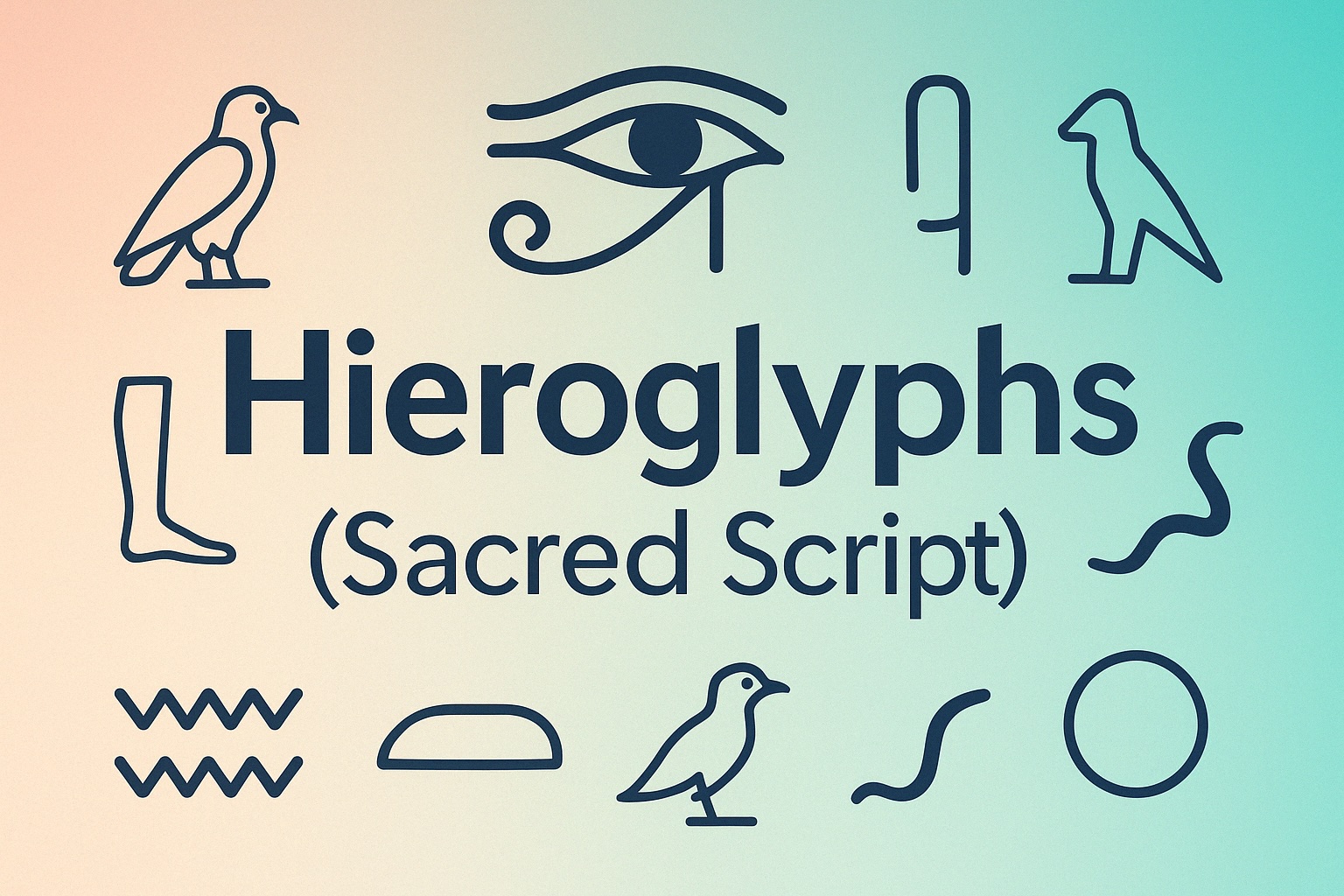What are Hieroglyphs?
Hieroglyphs are the characters used in ancient Egypt, also known as sacred script or divine script. Ancient people believed that words possessed magical power, and the ancient Egyptians referred to hieroglyphs as “the words of the gods.”
Twenty-four hieroglyphic symbols were commonly used as a standard alphabet, with each of the 24 glyphs representing a single sound.
The sounds used in ancient Egypt do not correspond exactly one-to-one with the modern alphabet. However, when matched with the closest equivalent sounds, the correspondence may look like the following (note that interpretations may vary depending on the source).

A phonogram is a type of character that represents a sound, such as the hiragana and katakana scripts used in modern Japanese.
On the other hand, a logogram is a character that conveys not only sound but also meaning—kanji are a good example of this.
It is believed that hieroglyphs included both types: some characters represented only sounds, while others carried specific meanings within the symbols themselves.
How Were Numbers Written in Hieroglyphs?
In ancient Egypt, numbers such as 1, 10, 100, 1,000, 10,000, 100,000, and 1,000,000 were represented using distinct hieroglyphic symbols.
Each symbol corresponded to a specific value, and the number was expressed by repeating the symbol as many times as needed.

For example, one lotus flower represents 1,000, one coil of rope represents 100, one arch or handle represents 10, and one single stroke represents 1.
Therefore, the number 3215 would be written by placing three lotus flowers, two coils of rope, one handle, and five strokes, like this:
Hieroglyphs were not only used to convey information but were also artistically beautiful and served as decorative elements. Like in many other ancient cultures, the people of Egypt believed that letters and numbers possessed a mysterious magical power.
Hieroglyphs were simple enough for the general population—even those who could not read—to learn easily. By remembering just three signs: a stroke ( | ), an arch or handle (∩), and a coil of rope, one could write any number from 1 to 999. Hieroglyphs could be written from left to right or from right to left. For example, the number 23 could be written as ∩∩||| or |||∩∩, and it would mean the same. However, numbers like 3 (|||) and 20 (∩∩) are typically grouped together when written.
While hieroglyphs were visually beautiful and well-suited for wall carvings and artistic inscriptions, they were not very practical for daily use. For practical documents such as mathematical texts or economic records, a different script called Hieratic was used.
The method of representing numbers using symbols is called a numeral system. How did ancient numeral systems evolve over time?
The History of Deciphering the Pyramids
Hieroglyphs were used in Egypt from around 3000 BCE until 394 CE. After that, the script fell out of use, and for many centuries, both how to read and write hieroglyphs were forgotten.
The breakthrough in deciphering hieroglyphs came with the discovery of the Rosetta Stone in 1799 during Napoleon’s expedition to Egypt. This stone monument was sent to scholars specializing in Egyptian studies and played a crucial role in the understanding of hieroglyphs. Research continued with contributions from English physicist Thomas Young and French linguist Jean-François Champollion, and in 1822, the hieroglyphic script was finally deciphered.
Thanks to this achievement, we are now able to understand a wealth of information inscribed on pyramid interiors, tombs, temple walls, and papyri.
The Invention of Writing
Where was writing invented, and how did it develop? Cuneiform script known as proto-cuneiform has been excavated from Sumerian ruins dating back to around 3200 BCE. It is possible that ancient Egyptian hieroglyphs were influenced by the Sumerian writing system.
Conclusion
Hieroglyphs were far more than just a writing system—they were a powerful blend of communication, art, and spiritual symbolism. In ancient Egypt, writing was not only a tool for recording daily life, but also a sacred act believed to hold magical power. Whether used to convey sounds, meanings, or numbers, hieroglyphs reflected the Egyptians’ deep reverence for order, harmony, and the divine.
Their ability to express both phonetic and ideographic meaning made them unique among early scripts. While not always practical for everyday documents, they left a lasting legacy through their beauty and symbolic complexity. As we trace their origins back to the broader history of writing—including potential influences from Mesopotamia—we come to see hieroglyphs not just as the script of an ancient civilization, but as a cornerstone in the evolution of human expression.

